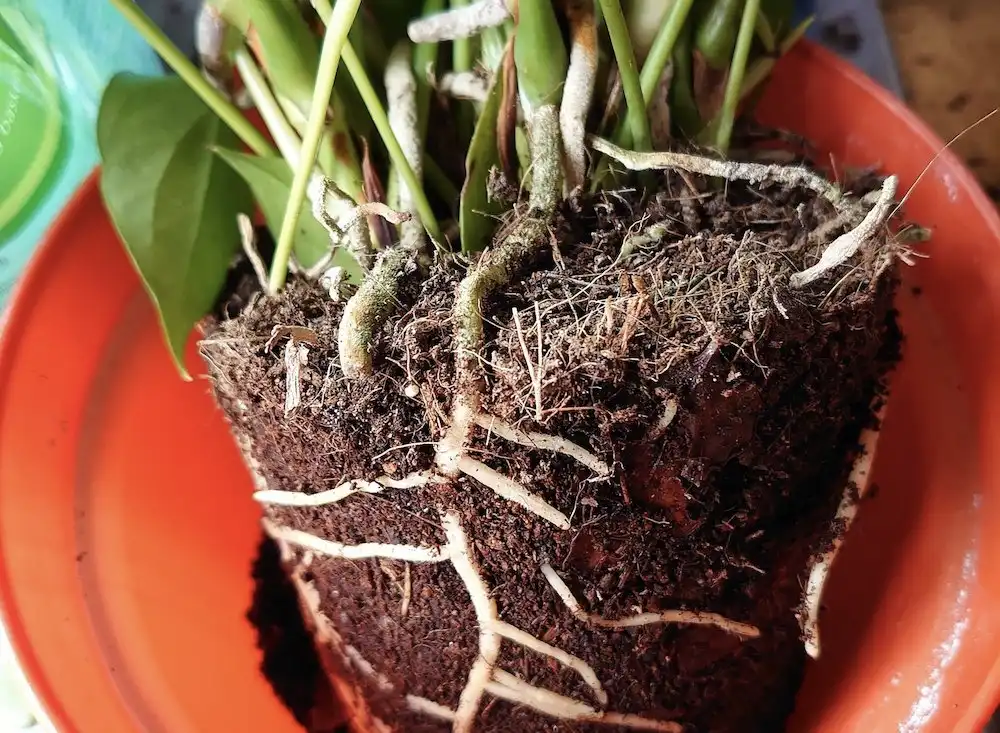Most people own houseplants and eagerly grow them on windowsills and shelves only to be disappointed when they wilt or die – new research has shown that the problem could be that we’re feeding them all wrong and we need to pay attention to the roots outside the soil.
Scientists from the University of Nottingham grew houseplants that have both aerial roots and roots in the soil and found the aerial roots were far better at taking up nitrogen (an important plant food) than their soil counterparts. This was found across three different species and in two humidities. The findings have been published today in Plant, Cell & Environment.
During the COVID-19 pandemic, houseplant sales in the UK increased by more than 50% from 2019-2022 and trailing varieties in particular like String of Hearts and Devil’s Ivy have become a popular ‘Instagrammable’ trend.
Aerial roots are a type of adventitious root that grow from the plant’s stem or leaf tissues above the ground. As with roots in soil they provide water and potentially nutrients to the plant in their native forest habitats. However, despite the popularity of houseplants, these expectations of aerial roots have rarely been measured and this is the first study to specifically measure this.
Dr Amanda Rasmussen from the University of Nottingham’s School of Biosciences led the study and says: “Houseplants are really important for improving air quality and bring mental health benefits but many people struggle to know the best way to look after them. The main focus is usually on feeding them in the soil with regular watering and plant food, but what many people don’t know is that many plant varieties have roots along the external stems that need our attention too. We wanted to test if these roots do take up nutrients and if so, find out exactly how much they can take up to improve the health of the plants.”
In this study the researchers directly compared nutrient uptake preferences of aerial and soil-formed roots of three common houseplant species under high and ambient relative humidities. Growth and physiology parameters were measured weekly for Anthurium andreanum also known as Flamingo Flower, Epipremnum aureum or Devil’s Ivy andPhilodendron scandens or Sweetheart Plant grown in custom made growth chambers.
Both aerial and soil-formed roots were then fed mixtures of nitrate, ammonium and glycine as different potential fertilisers. Aerial roots were consistently better at nitrogen uptake of all three types than soil roots and all three species grew more in high humidity, with aerial roots demonstrating the greatest biomass increase. Higher humidities for indoor niches, together with fertiliser applications to aerial roots will support indoor plant growth.
The results of this study are really exciting as they could transform the way we feed certain types of plants and help us to keep them healthy and thriving! A simple spray with water and some plant food to the aerial roots may help optimise the amount of nutrients the plant gets and will ensure we can enjoy them to their fullest for many years.
Dr Amanda Rasmussen, University of Nottingham, School of Biosciences
This study also highlights the importance of understanding and incorporating aerial root physiology in the design and maintenance of indoor greenspaces.
Read the paper: Plant, Cell & Environment
Article source: University of Nottingham
Author: Jane Icke
Image credit: University of Nottingham








